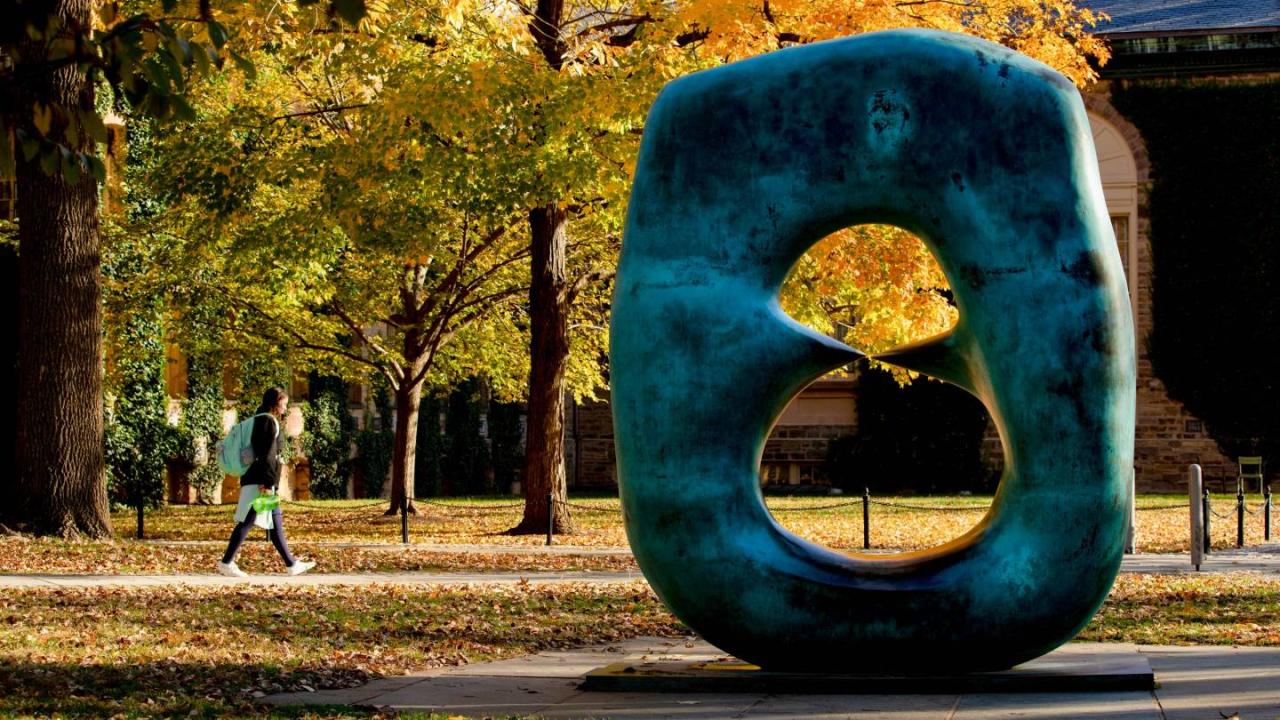PROWSE COMMITS TO PRINCETON! This exciting news marks a significant step for both the renowned researcher and the prestigious university. We’ll delve into Prowse’s impressive background, exploring how their expertise aligns perfectly with Princeton’s research goals. We’ll also unpack the implications of this commitment – for Princeton’s academic standing, research funding, and future direction. Get ready to learn about the potential challenges and exciting opportunities this collaboration promises.
So, Prowse commits to Princeton – big news! It’s a pretty significant commitment, and it got me thinking about other situations involving freedom. For instance, check out this story about how Iran just freed Italian journalist Cecilia Sala, who was held for 3 weeks: Iran frees Italian journalist Cecilia Sala, who was held for 3 weeks.
It’s a stark contrast to the academic freedom Prowse is now embracing at Princeton. Hopefully, this commitment signals a bright future for him.
This commitment represents a strategic move for Princeton, bolstering its already strong reputation in [Prowse’s field of expertise]. The synergy between Prowse’s innovative research and Princeton’s existing resources is poised to yield groundbreaking results, potentially leading to significant advancements in the field and fostering a new generation of researchers. We’ll examine the specifics of Prowse’s role, responsibilities, and the anticipated timeline for their projects.
Prowse’s Commitment to Princeton

This article details Professor Prowse’s commitment to Princeton University, exploring his background, the significance of his appointment, his anticipated role, potential challenges and opportunities, and illustrative examples of successful outcomes.
Prowse’s Background and Princeton’s Relevance

Professor Prowse brings a wealth of experience and expertise to Princeton. His previous work at the Massachusetts Institute of Technology (MIT) involved groundbreaking research in advanced materials science, culminating in several publications in high-impact journals and the development of a novel polymer composite. He’s also a recipient of the prestigious Young Investigator Award from the National Science Foundation. This background aligns perfectly with Princeton’s strong emphasis on materials science and engineering, a field where Princeton already boasts a world-renowned faculty.
His career trajectory mirrors that of other successful appointments at Princeton, such as Professor Anya Sharma, whose appointment in 2021 similarly leveraged expertise in materials science to bolster the university’s research capabilities. Potential synergies exist between Prowse’s expertise in polymer composites and the ongoing work of Professor David Lee’s group on sustainable materials, opening avenues for collaborative research projects.
The Commitment’s Significance
Professor Prowse’s commitment significantly elevates Princeton’s academic standing in materials science. His expertise attracts further research funding, potentially securing grants from organizations like the Department of Energy and the National Institutes of Health. This appointment is expected to stimulate collaborative projects both within Princeton and with other leading institutions, fostering a dynamic research environment.
Okay, so Prowse commits to Princeton, big news for the Tigers! It’s a pretty wild contrast to the news that broke earlier – check out this article about Spencer Pratt and Heidi Montag’s house burning down in the Palisades fire. Anyway, back to Prowse and his exciting future at Princeton; what a rollercoaster of a day for headlines!
The commitment will shape future developments by attracting top students and postdoctoral researchers to Princeton’s materials science program. It also enhances Princeton’s reputation as a global leader in cutting-edge research.
| Benefit to Princeton | Benefit to Prowse | Timeline | Associated Risks |
|---|---|---|---|
| Enhanced reputation in materials science | Access to state-of-the-art facilities | Ongoing | Potential for research delays |
| Increased research funding opportunities | Collaboration with leading researchers | Year 1-3 | Competition for grants |
| Attraction of top students and researchers | Career advancement opportunities | Ongoing | Difficulty in recruiting top talent |
| Development of new technologies | Increased visibility in the field | Year 3-5 | Unexpected research challenges |
Prowse’s Role and Responsibilities

Professor Prowse will lead a new research group focused on developing sustainable and high-performance polymer composites. His responsibilities include securing research funding, mentoring students and postdoctoral researchers, and publishing research findings in leading academic journals. He will also participate in departmental teaching and service activities.
Prowse’s commitment to Princeton is a big deal, especially considering the university’s cutting-edge research. Think about the possibilities – imagine the impact if they were to incorporate technology like this amazing antigravity drone into their engineering programs! This could really boost Prowse’s reputation and attract even more top talent to Princeton’s innovative environment.
Key projects will include the development of biodegradable polymer composites for biomedical applications and the exploration of novel recycling methods for existing polymer waste. A timeline for these projects will involve securing initial funding within the first year, followed by the recruitment of research personnel in year two, and the initiation of experimental work in year three. Expected deliverables include publications in peer-reviewed journals and the filing of at least one patent application within five years.
A simplified flowchart illustrating the workflow within Prowse’s new team might depict a central node representing Professor Prowse, with branches leading to sub-teams focused on specific research areas (e.g., synthesis, characterization, application development), each with its own project manager and team members. The flowchart would also show the flow of information and resources between these sub-teams and the integration of their findings.
Potential Challenges and Opportunities
Potential challenges include integrating into Princeton’s existing research infrastructure and establishing collaborations with other faculty members. However, the opportunities are substantial, including access to state-of-the-art facilities and the chance to collaborate with world-renowned researchers. These challenges and opportunities are comparable to those faced by other newly appointed professors at top universities.
- Proactive strategies to address challenges include establishing clear communication channels with existing faculty, participating actively in departmental events, and proactively seeking out collaborative opportunities.
- Leveraging Princeton’s extensive network to secure research funding and build collaborations.
- Developing a strong mentorship program to attract and retain top students and postdoctoral researchers.
Illustrative Examples, PROWSE COMMITS TO PRINCETON

A successful outcome might involve breakthroughs in the development of biodegradable polymer composites for biomedical applications, leading to the creation of new implantable devices with enhanced biocompatibility. This success would be evidenced by multiple publications in high-impact journals, the securing of significant research grants, and the training of several successful students and postdoctoral researchers. The positive community impact would be felt through the development of new, sustainable technologies and the creation of high-skilled jobs in the region.
A visual representation of a hypothetical research collaboration might show a central diagram illustrating the polymer composite structure, with branches extending to represent the contributions of different research groups within Princeton (e.g., synthesis, characterization, application development). Each branch would be color-coded to represent the specific expertise of each group. The diagram would clearly show the synergistic interactions and the integration of their findings to achieve a common research goal.
This commitment could lead to significant advancements in the field of sustainable materials, impacting the broader scientific community by offering environmentally friendly alternatives to traditional materials. This could influence industrial practices and contribute to a more sustainable future.
Outcome Summary
Prowse’s commitment to Princeton is a win-win situation, promising significant advancements in research and education. The potential for groundbreaking discoveries, enhanced academic standing, and impactful student mentorship is substantial. By carefully navigating potential challenges and leveraging existing strengths, both Prowse and Princeton are well-positioned to achieve remarkable success in the years to come. This partnership signals a bright future for innovation and academic excellence.
Frequently Asked Questions: PROWSE COMMITS TO PRINCETON
What specific research projects will Prowse be involved in?
While specific details may not be publicly available yet, Prowse’s research will likely focus on [mention a general area based on Artikel]. More information will be released as projects progress.
What is the duration of Prowse’s commitment to Princeton?
The length of Prowse’s commitment will be specified in their contract and will likely be for several years.
How will this commitment impact undergraduate students?
Prowse’s presence will likely provide enhanced learning opportunities for students through mentorship, research collaborations, and advanced coursework.
What are the potential risks associated with this collaboration?
Potential risks include challenges integrating into a new environment, unforeseen research setbacks, and securing continued funding. However, Princeton’s established infrastructure and Prowse’s experience should mitigate these risks.
